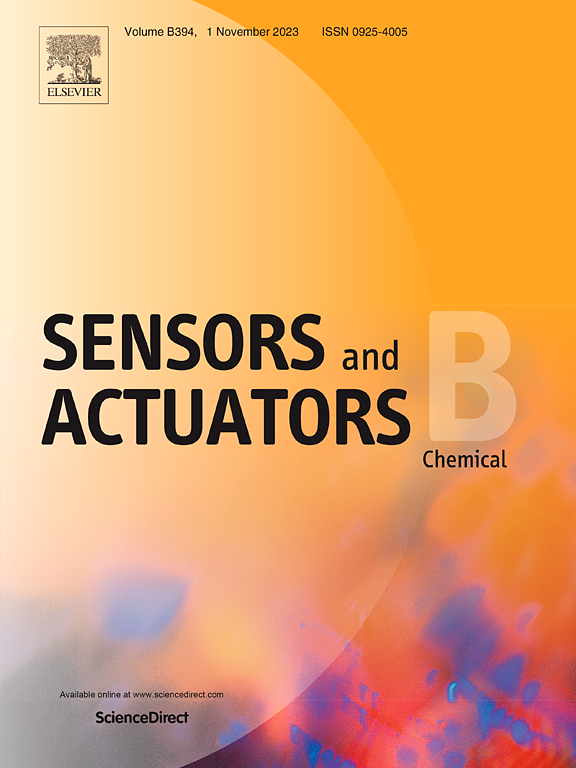Centrifugal microfluidics platform integrated with multiple trigger-type valves for chemiluminescence detection of prostate cancer
IF 8
1区 化学
Q1 CHEMISTRY, ANALYTICAL
引用次数: 0
Abstract
Chemiluminescence is currently the most widely used immunoassay method in clinical practice, characterized by its high detection sensitivity, high specificity, and rapid processing speed. Traditional chemiluminescence rely on large, complex instruments that require intensive manual maintenance, making it unsuitable for regions with limited medical resources. Developing POCT devices based on centrifugal microfluidics is a feasible solution. However, fully integrating complex assay steps such as sequential reagent release, precise fluid transport, and magnetic beads manipulation into centrifugal microfluidics remains challenging, limiting its application in chemiluminescence. Commonly used integration schemes concentrate on utilization of single trigger-type valves and the resolution of valve activating inevitably decreases as the number increases due to the same triggering mechanism. In our previous work, we introduced new Euler force triggered siphon valves which were different from conventional hydrophilic siphon valves. In this work, we further proposed an integration scheme based on passive valves with different triggering mechanisms to reduce the risk of valve interference, resulting in more precise fluid control and thus better reproducibility of chips. As a validation, we detected total prostate cancer antigen (TPSA) and free prostate cancer antigen (FPSA) using direct chemiluminescence on the chip. The detection process was completed in less than 20 min and limit of detection (LOD) was 0.1 ng/mL for TPSA and 0.08 ng/mL for FPSA, respectively. The chip relies solely on valves for fluid control without external structural intervention, establishing significant advantages in automation of entire platform, which create broad application prospects for early clinical diagnosis.

集成多触发阀的离心微流控平台,用于前列腺癌化学发光检测
化学发光法是目前临床应用最广泛的免疫分析方法,具有检测灵敏度高、特异性高、处理速度快等特点。传统的化学发光依赖于大型、复杂的仪器,需要大量的人工维护,因此不适合医疗资源有限的地区。开发基于离心微流体的POCT器件是一种可行的解决方案。然而,将复杂的分析步骤(如顺序试剂释放、精确流体输送和磁珠操作)完全集成到离心微流体中仍然具有挑战性,限制了其在化学发光中的应用。常用的集成方案多集中于单个触发型阀门的使用,由于触发机构相同,阀门的激活分辨率必然随着数量的增加而降低。在我们之前的工作中,我们介绍了不同于传统亲水虹吸阀的新型欧拉力触发虹吸阀。在这项工作中,我们进一步提出了一种基于不同触发机构的被动阀的集成方案,以降低阀的干扰风险,从而实现更精确的流体控制,从而提高芯片的可重复性。作为验证,我们在芯片上使用直接化学发光技术检测了总前列腺癌抗原(TPSA)和游离前列腺癌抗原(FPSA)。检测过程在20 min内完成,TPSA和FPSA的检出限(LOD)分别为0.1 ng/mL和0.08 ng/mL。该芯片仅依靠阀门进行流体控制,无需外部结构干预,在整个平台自动化方面具有显著优势,为临床早期诊断创造了广阔的应用前景。
本文章由计算机程序翻译,如有差异,请以英文原文为准。
求助全文
约1分钟内获得全文
求助全文
来源期刊

Sensors and Actuators B: Chemical
工程技术-电化学
CiteScore
14.60
自引率
11.90%
发文量
1776
审稿时长
3.2 months
期刊介绍:
Sensors & Actuators, B: Chemical is an international journal focused on the research and development of chemical transducers. It covers chemical sensors and biosensors, chemical actuators, and analytical microsystems. The journal is interdisciplinary, aiming to publish original works showcasing substantial advancements beyond the current state of the art in these fields, with practical applicability to solving meaningful analytical problems. Review articles are accepted by invitation from an Editor of the journal.
 求助内容:
求助内容: 应助结果提醒方式:
应助结果提醒方式:


